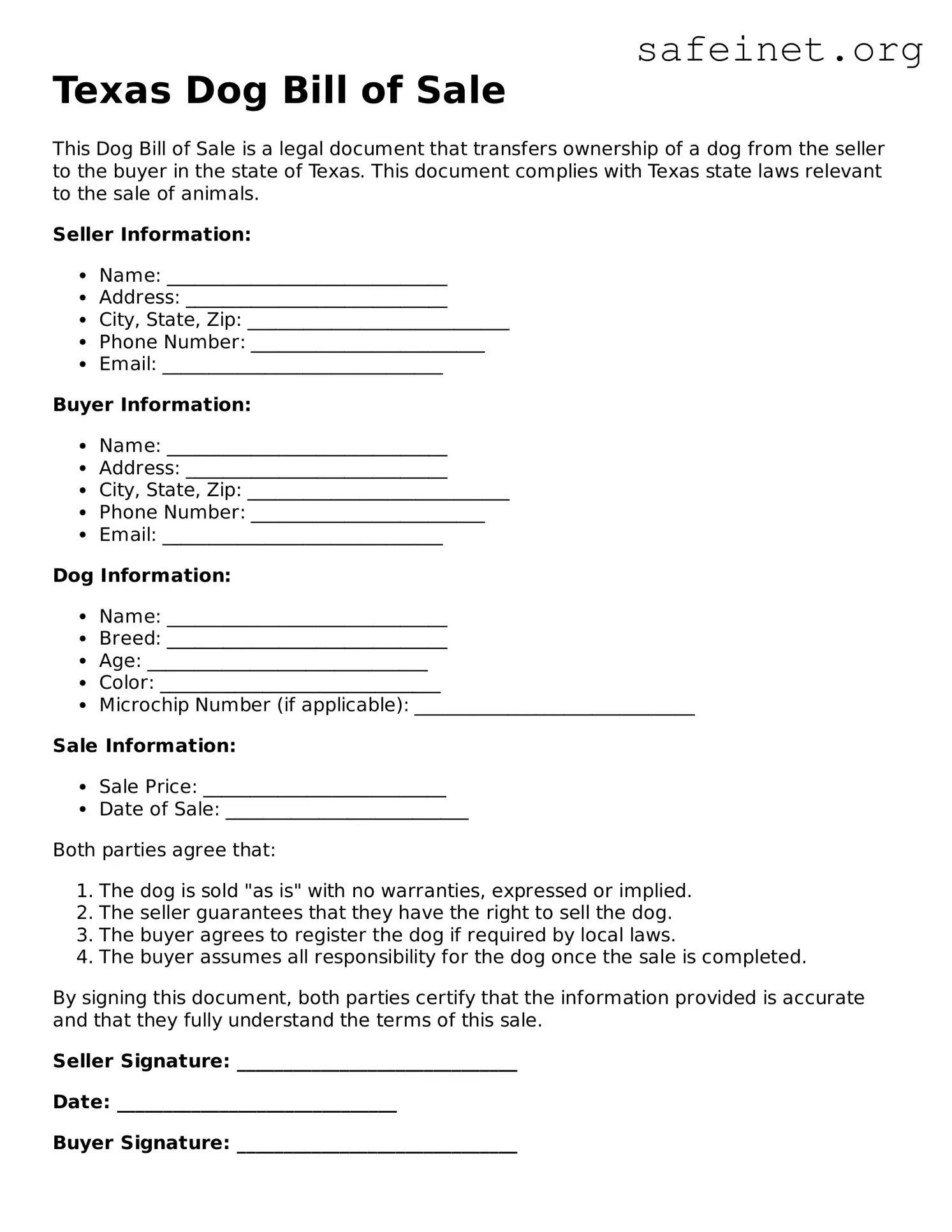What is a Texas Dog Bill of Sale form?
The Texas Dog Bill of Sale form is a document used to record the sale of a dog in the state of Texas. This form is important for both buyers and sellers as it provides proof of ownership transfer. It outlines details like the dog's breed, age, and any health information. Having this document can help prevent disputes in the future regarding ownership or the dog's condition at the time of sale.
Is the Texas Dog Bill of Sale form legally required?
No, the Texas Dog Bill of Sale form is not legally required. However, it is highly recommended for both parties involved in the transaction. Without this form, there may be misunderstandings about ownership or any agreements made regarding the dog's health or care. Using this document can provide peace of mind, ensuring that both the seller and buyer have a clear agreement.
What information should be included in the form?
The form should include key details such as the names and addresses of both the seller and buyer, the dog’s breed, age, color, and any identification numbers like microchip information. Additionally, it should state the sale price and any health issues or warranties provided by the seller. All of this information is crucial for clarity and future reference.
Can I use a generic bill of sale for a dog?
While a generic bill of sale may cover basic elements of a sale, it is better to use a specific Texas Dog Bill of Sale form. A tailored form ensures that all pertinent details relevant to dog ownership are included. This not only helps protect your interests but also makes the transaction smoother for both parties.
Do I need witnesses for the bill of sale to be valid?
Witnesses are not typically required for the Texas Dog Bill of Sale form to be valid. However, having a witness can add an extra layer of security and authenticity to the transaction. It is especially beneficial in situations where disputes might arise over the sale or ownership of the dog in the future.
What should I do after completing the Dog Bill of Sale?
Once the Dog Bill of Sale is completed and both parties have signed it, it is advisable for both the seller and the buyer to keep a copy for their records. This ensures that each party has a reference point should any questions arise later. Maintaining this documentation can help in establishing a clear and amicable ownership transition.
